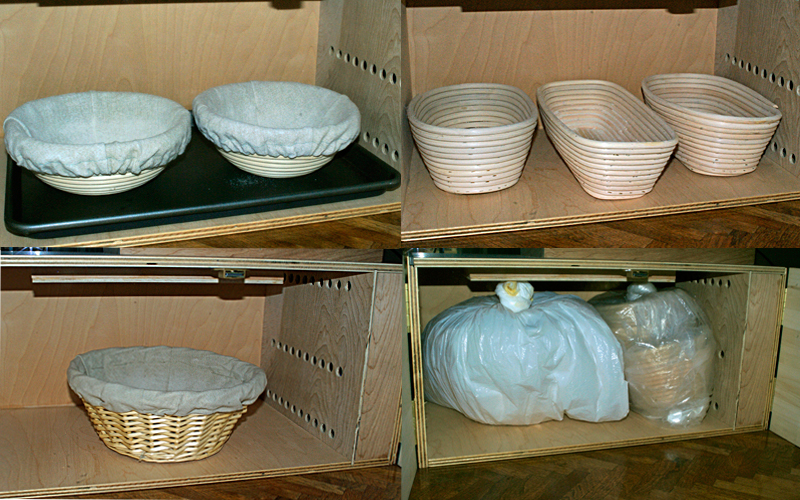Flour, water, salt, time, and temperature. The right combinations of those variables, plus technique, make good bread.
Along with a few simple tricks.
I've learned how to make pretty good bread from this forum. This is the first of a set of posts describing a few of the things I've learned. Maybe they will help somebody new.
Here in New Hampshire temperature can be a problem. Like this week when the overnight low was -6F and the temperature in our kitchen was 55F. Yeast growth is really dependent on temperature and there is a happy zone in the 70-80F range. A proofing box gives me the control over temperature. There are several threads on proofing boxes on TFL. and there are commercial products. I made one, mostly with stuff I had around the house. It was one of the things that made a big difference in my ability to make consistent bread. Here it is in pictures.
I started with a cooler we had in the basement:

Any size will do, as long as it is 'big enough'. Then I added a 15W light bulb and socket, and a thermostat. Nothing fancy, just shoved it all in there. The extension cord coming out of the box is flat, rather than round, so it is not too badly squished. The light bulb could probably be smaller wattage. You do want it some distance away from the thermostat.

That's Earlene, my starter Fred's love child, bubbling in the middle after a warm and pleasant overnight stay. The thermostat is a Lux Pro PSP300. I got mine from Amazon:http://www.amazon.com/LuxPro-PSP300-Programmable-Digital-Thermostat/dp/B0032JUG46/ref=sr_1_2?ie=UTF8&qid=1359256101&sr=8-2&keywords=lux+pro+psp300.It's a little expensive, but it works well. I think their WIN100 model, which is a little cheaper, would work too.
I can also fit a proofing bucket for bulk fermentation in there:

Cambro buckets work very well for bulk fermentation. Make sure you get yours from a local restaurant supply rather than a 'bread enthusiast' web site: mine cost $6.

That's Hamelman's Five-Grain Levain, more or less, in there.
I usually retard my sourdoughs, for better flavor and scheduling. But sometimes I do the final proofing in the box. For that I built a little stand that lets me stack bread pans or bannetons.

The box is tight enough and the loaves are wet enough to create a nice humid atmosphere inside without the need to introduce additional humidity.
The thermostat works for both heating and cooling. Sometimes I use it to control a little portable electric cooler (which doesn't have a thermostat) when the fridge is full and I need to retard some dough.
Bread runs on its own schedule. A proofing box help it conform, to some extent, with yours.











